Schönbrunn Palace in Vienna, Austria, is a stunning example of Baroque architecture and a UNESCO World Heritage Site that offers visitors a glimpse into the illustrious past of the Habsburg dynasty. Originally a modest hunting lodge, this grand imperial residence has been expanded over the centuries to reflect the power and wealth of the ruling monarchs. From its harmonious blend of architectural styles to the lavish interiors and expansive gardens, Schönbrunn Palace is a must-visit destination for anyone interested in exploring the cultural heritage of Austria. But behind its opulent facade lies a captivating history waiting to be uncovered.
Key Points
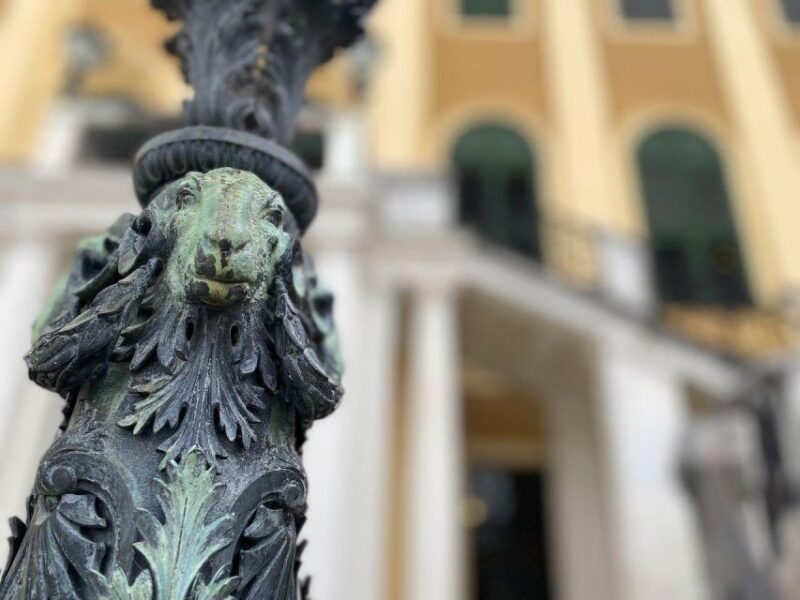
- Schönbrunn Palace is a UNESCO World Heritage Site, showcasing Baroque architecture and the opulent legacy of the Habsburg dynasty in Vienna.
- The palace’s impressive exterior, with its ornate facades and lavish interiors, reflects the power and wealth of the Habsburg rulers.
- Visitors can explore the palace’s elaborately decorated rooms, witness the grandeur of the Habsburg court, and enjoy the expansive gardens.
- The palace’s history spans centuries, as it evolved from a modest hunting lodge to the primary summer residence of Austria’s imperial rulers.
- Schönbrunn Palace offers a glimpse into the opulent world of the Habsburg Empire and is a must-visit destination for visitors to Vienna.
History and Significance
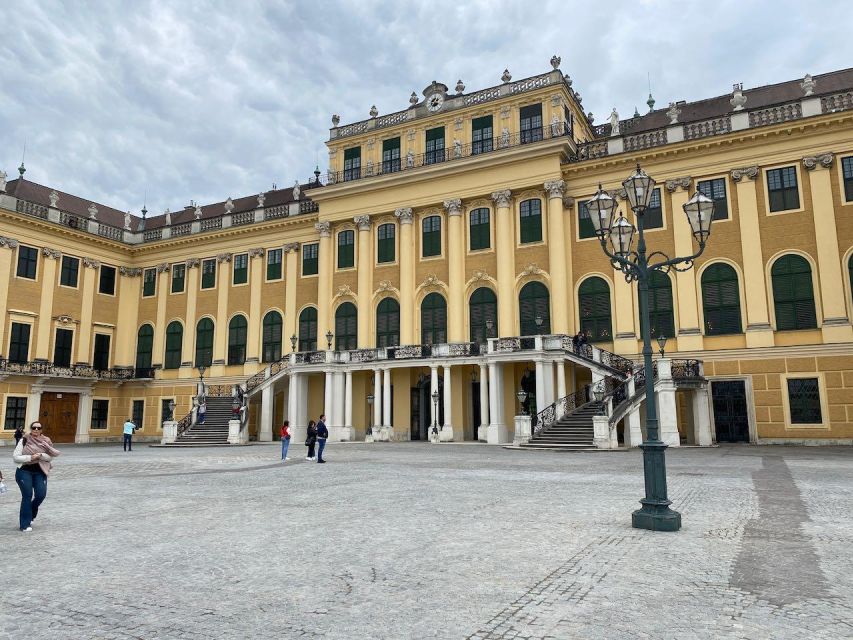
The Schönbrunn Palace, a UNESCO World Heritage Site, holds a rich history as the former summer residence of the Habsburg monarchs and one of the most significant examples of Baroque architecture in Austria.
Originally a modest hunting lodge, the palace was expanded over the centuries to its current grand scale, reflecting the power and wealth of the Habsburg dynasty.
Its gardens, fountains, and structures showcase the artistic vision and technological advancements of the era.
Today, the palace stands as a testament to Vienna’s illustrious past, drawing visitors from around the world to explore its opulent interiors and enjoy the grandeur of the Habsburg legacy.
You can also read our reviews of more tours and experiences in Austria.
Architectural Highlights
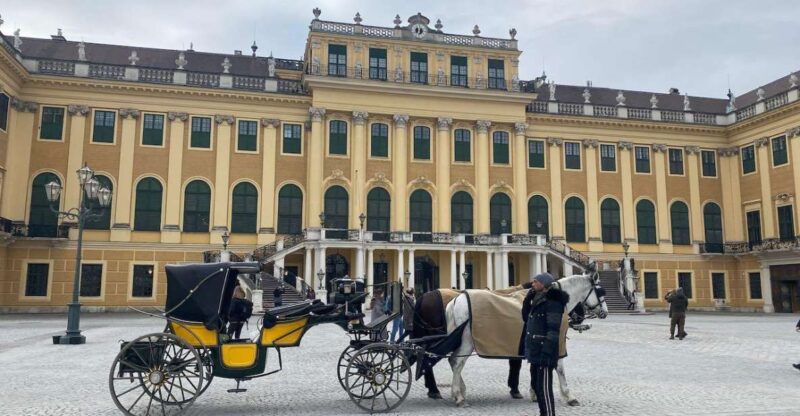
As visitors step through the palace’s grand entrance, they’re immediately captivated by the impressive Baroque architecture that defines the Schönbrunn’s exterior. Ornate facades, intricate sculptures, and towering domes exemplify the palace’s opulent design, which was heavily influenced by the renowned architect Johann Bernhard Fischer von Erlach.
Throughout the palace’s interior, visitors can admire the remarkable craftsmanship and attention to detail that permeate the lavishly decorated rooms, from the breathtaking State Apartments to the stunning Orangery.
The meticulous blend of Baroque, Rococo, and Neoclassical elements creates a harmonious and visually stunning experience, transporting visitors back in time to the grandeur of the Habsburgs’ imperial residence.
Resident Royalty
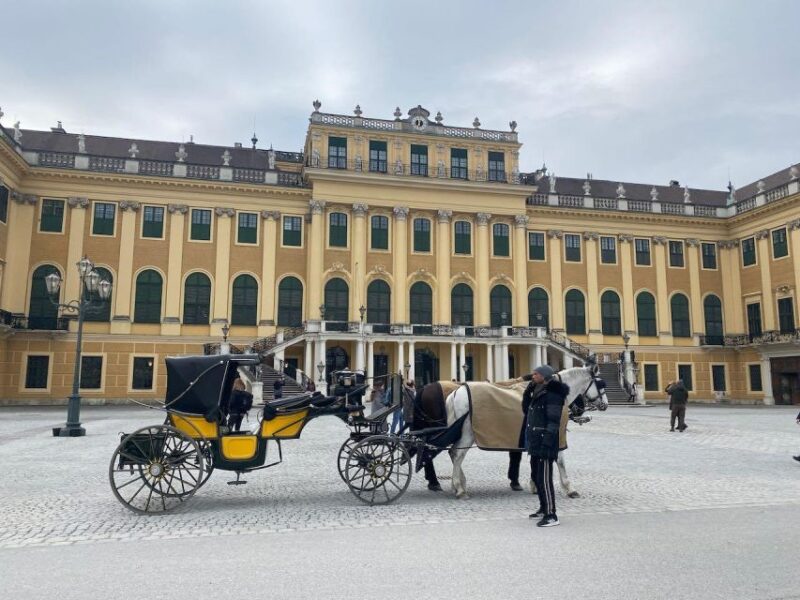
Why, the Schönbrunn Palace has long been the imperial residence of the Habsburg dynasty, serving as the primary summer home for Austria’s ruling monarchs for centuries.
Generations of Habsburg emperors and empresses called this grand Baroque palace their home, shaping its evolution and leaving an indelible mark on its rich history.
From the ambitious Maria Theresa to the ill-fated Empress Elisabeth, the palace’s walls have borne witness to the joys and sorrows of royal life.
Visitors can explore the lavish apartments where these larger-than-life figures lived, worked, and entertained, gaining a glimpse into the opulent world of the Habsburg court.
The palace’s resident royalty have left an enduring legacy, making Schönbrunn a true symbol of Austria’s imperial past.
Palace Interiors
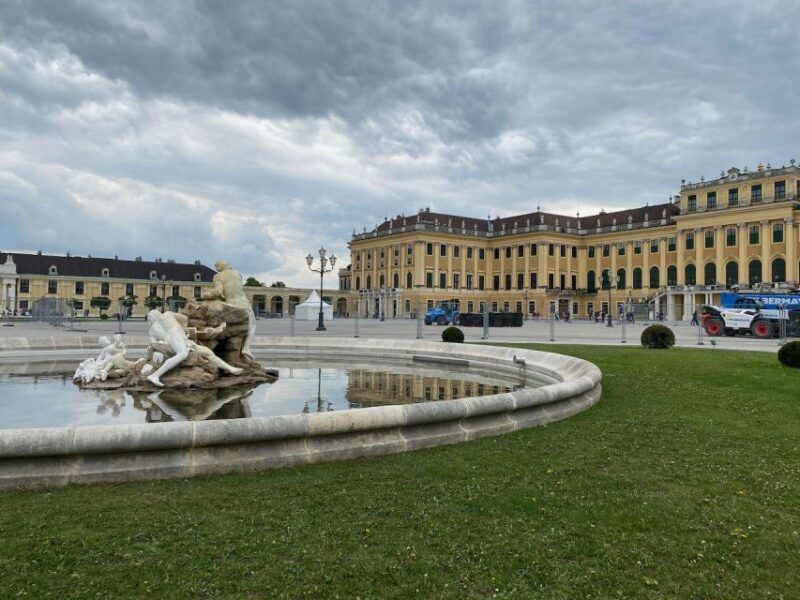
Schönbrunn Palace’s opulent interiors showcase the grandeur and lavish living of the Habsburg dynasty, with each room meticulously designed to impress and captivate visitors.
Elaborately frescoed ceilings, gilded mirrors, and ornate chandeliers adorn the palace’s stately apartments, transporting guests back to the splendor of Austria’s imperial past.
The Baroque and Rococo styles predominate, with intricate moldings, plush fabrics, and opulent furnishings reflecting the sophistication and taste of the royal residents.
From the impressive Great Gallery to the intimate chambers of the Empress, the palace’s interior design reflects the power, wealth, and refined elegance of the Habsburg Empire.
Visitors can explore these breathtaking spaces and imagine the lavish lives of the monarchs who once called Schönbrunn home.
More Great Thing To Do NearbyGardens and Grounds
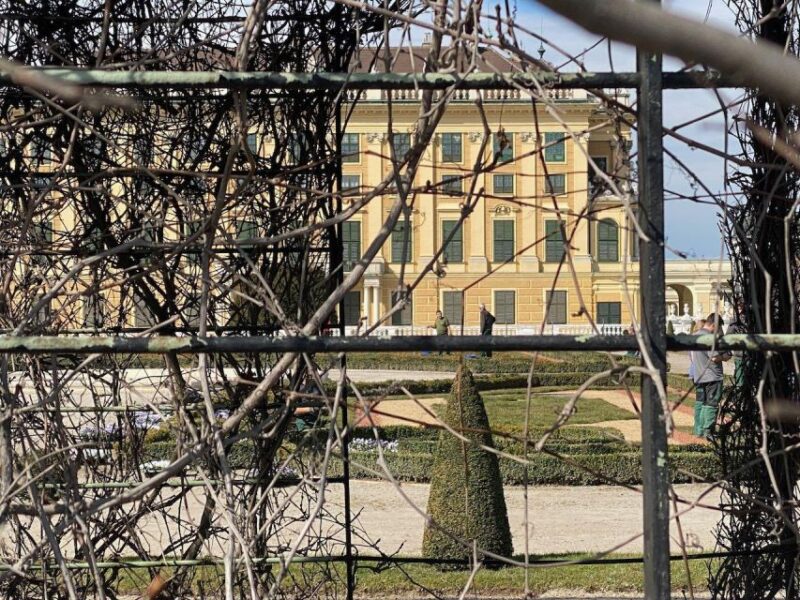
Beyond the palace’s ornate interiors, Schönbrunn’s expansive gardens and grounds offer visitors a chance to explore the stunning outdoor spaces that were integral to the Habsburg dynasty’s opulent lifestyle.
Spanning over 1,700 acres, the palace gardens feature meticulously manicured landscapes, ornamental fountains, and an array of themed areas.
Visitors can wander through the enchanting Orangery Garden, marvel at the intricate Baroque-style Neptune Fountain, and climb to the top of the iconic Gloriette structure for panoramic views of the entire estate.
Whether strolling along the tree-lined pathways or admiring the grandiose Schönbrunn Zoo, guests are immersed in the splendor that epitomized the Habsburgs’ imperial power and influence.
Visitor Information
Visitors to Schönbrunn Palace can conveniently purchase tickets online or on-site, with prices starting from €49.00 per person.
The tour offers a memorable experience, allowing guests to skip the line through a separate entrance and explore the palace’s rich history, architecture, and connection to Vienna with the guidance of a live tour guide.
The tour is wheelchair accessible, and children can join for free.
Guests should note that pets, food/drinks, luggage/large bags, flash photography, and audio recording aren’t allowed.
Visitors can take advantage of the free cancellation policy up to 24 hours in advance, ensuring flexibility in their travel plans.
Getting There
To reach Schönbrunn Palace, visitors can conveniently take the U4 subway line, which has a direct stop at the palace’s entrance.
Alternatively, one can opt for the 10A or 51A bus lines, both of which offer direct access to the iconic landmark.
Plus, ample parking is available on-site for those arriving by private vehicle.
Whether traveling by public transportation or driving, getting to Schönbrunn Palace is straightforward and hassle-free.
The palace’s central location and well-connected transportation options make it easily accessible for visitors from all across Vienna and beyond.
With multiple convenient options to choose from, travelers can plan their visit to this UNESCO World Heritage Site with ease.
Tips for Visitors
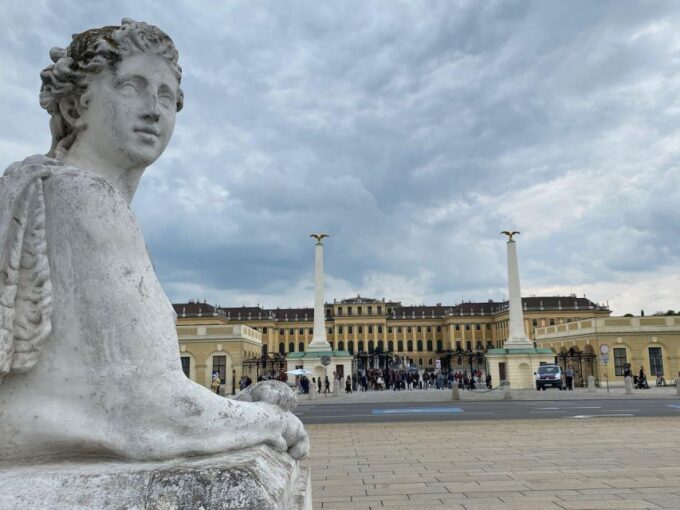
With a bit of planning ahead, visitors can make the most of their experience at Schönbrunn Palace. Packing a small snack and water can come in handy, as dining options within the palace grounds may be limited during peak visitation times. Plus, donning comfortable walking shoes is advisable, as the expansive palace and gardens require considerable exploration on foot.
Visitors should also note that photography is allowed, but flash photography and audio recordings are prohibited inside the palace. To avoid long queues, it’s recommended to book tickets in advance and use the dedicated entrance for skip-the-line access.
Frequently Asked Questions
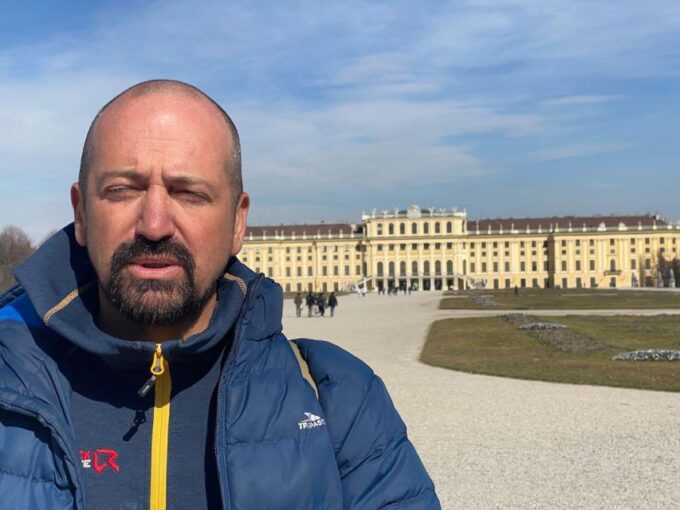
Can I Take a Wheelchair Into the Palace?
Yes, the palace is wheelchair accessible. According to the key features, the tour offers a wheelchair-accessible experience, allowing visitors to explore the palace’s history and architecture comfortably.
Are There Any Discounts for Students or Seniors?
Yes, the palace offers discounted tickets for students and seniors. Students can purchase tickets for €42.50, while seniors (65+) can get tickets for €46.50. These reduced-price options provide accessibility for various age groups to explore the palace.
How Long Does It Take to Tour the Entire Palace?
The tour of the entire Schönbrunn Palace typically takes around 1.5 hours to complete. Visitors have the opportunity to explore the palace’s history, residents, and architecture with a live tour guide during this time.
Is There a Dress Code I Need to Follow?
There is no strict dress code for touring the Schönbrunn Palace. Visitors are advised to dress comfortably and wear appropriate clothing for walking. Casual attire is generally acceptable, but formal wear isn’t required.
Can I Bring My Own Food and Drinks Inside the Palace?
No, visitors are not allowed to bring their own food and drinks inside the palace. According to the important information, outside food/drinks are not permitted on the tour. Visitors should plan accordingly and purchase any refreshments on-site.
Recap
Schönbrunn Palace is a captivating UNESCO World Heritage site that showcases the grandeur of the Habsburg dynasty.
Its Baroque architecture, lavish interiors, and expansive gardens offer visitors a glimpse into Vienna’s illustrious past.
As a must-visit destination, the palace’s harmonious blend of styles and royal legacy make it a testament to Austria’s rich cultural heritage.
You can check if your dates are available here:More Tour Reviews in Austria
Not for you? Here's more things to do in Austria we have recnetly reviewed
- Vienna as Never Seen Before: Hidden Courtyards, Legends and Symbols
- Private Day Trip to Bratislava From Vienna
- Bratislava Day Tour From Vienna With a Local Experienced Guide
- Private Salzburg Day Trip From Vienna
- Vienna Airport Arrival Transfer (Airport to Vienna Hotel)
- Spa, Wellness & Fitness 1 DAY CARD -The Golden Tree Vienna
- Johann Strauss Ball – Summer Edition in Kursalon Vienna
- Vienna Private Airport Transfer
- Sightseeing Transfers From Vienna to Salzburg With a 4-Hours Stop in Hallstatt
- Take VIP Night Photos in Vienna With A Pro Photographer
- Try Find Your Better Than Us ! Airport Transfer Service in Vienna HTL-APT (Vie)
- Private Transfer Vienna → Salzburg, Hotel-To-Hotel, English-Speaking Driver
